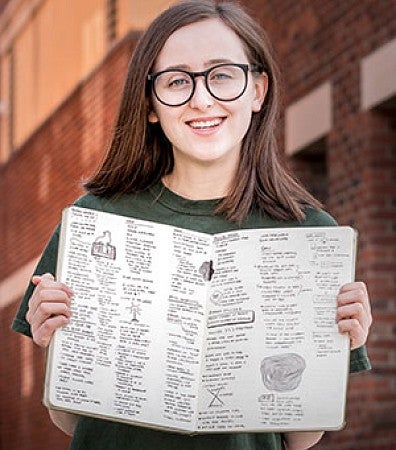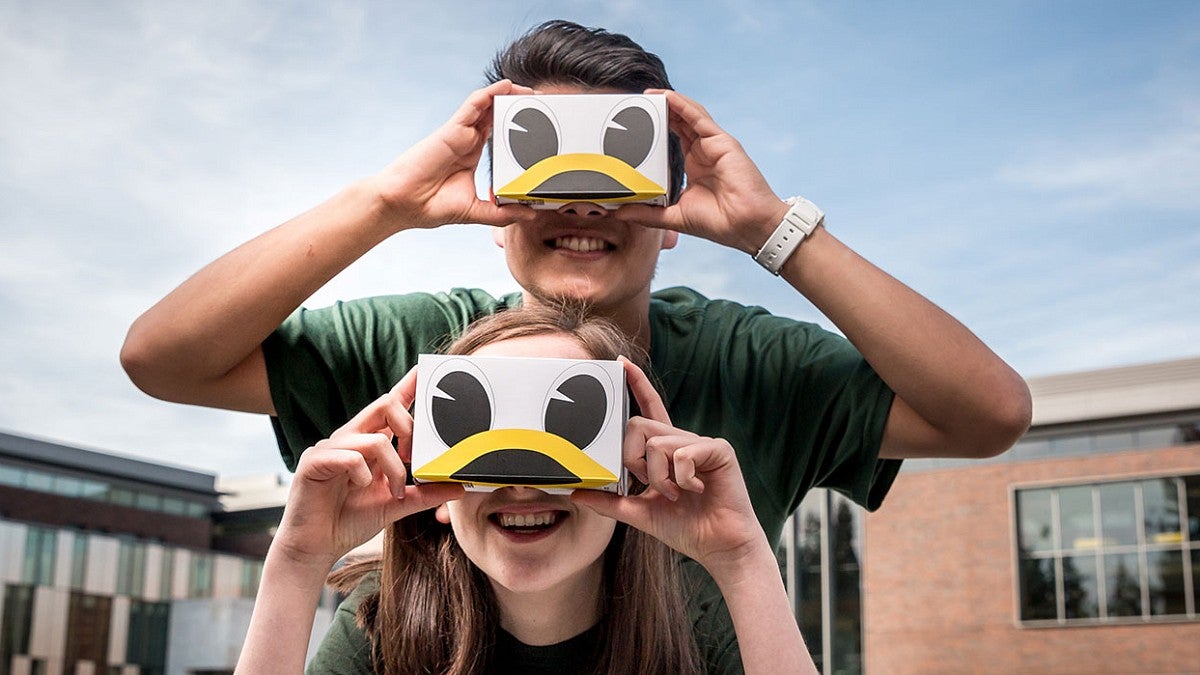Clark Honors College senior Hannah Lewman was the lead content writer on UO 360, a recent project of the university's communications department. UO 360 is an app that uses 360-degree video technology to take prospective students on a virtual tour of campus.
“No university has done this,” Lewman said. “Some universities have played around with 360 video of ambassadors walking around, but this is the first "choose-your-own-adventure-style" campus tour. It’s very UO to be on the cutting edge, so it’s a good fit for the university as a whole.”
The app is intended to serve prospective students who can’t visit campus for an in-person tour, as well as those who want to get a feel of the space before they visit.

Lewman was brought onto the UO 360 project through her work as a co-director at Allen Hall Advertising. Previously, she had worked on campaigns distributed regionally and on the UO campus, but the 360 project has elevated her work to a much wider audience.
“This is probably the most widely distributed thing I’ve ever worked on, which is exciting,” Lewman said. “I’ve had stuff visible before, but certainly not sent out across the country. I haven’t actually thought about that until right now. That’s cool.”
Lewman was brought onto the project fall 2017 with a number of other students to help brainstorm specific locations and experiences on campus that should be featured in the app.
“They did a really good job incorporating students early on and making it really clear that the communications team wanted student voices involved,” she said. “I didn’t feel like I was fighting for a seat at the table with professionals.”
After the team settled on the UO buildings that app users could interact with, they sent a list to Lewman and tasked her with writing the names and descriptions of each location. While the objective was simple, the work was complex; Lewman had to consider the perspectives of students who had no connection to the university.
“A high school student from Tennessee isn’t going to connect with the phrase Autzen Stadium; that doesn’t mean anything to them,” she explained. “So what does it need to say? Does it need to say football stadium? Then, what description beyond that is going to make them click on it, so that maybe they go to areas of campus that they wouldn’t have thought to click on without an interesting hook?”
Lewman had to account for the university’s unique brand voice and values in its communications, something that she has learned both from her advertising major and her time in the Clark Honors College.
“One of my favorite things about the Clark Honors College is that a class discussion can involve people from 10 different departments all making connections between the course material and their majors,” Lewman said. “Learning to approach problems from multiple perspectives is a super valuable skill.”
Ultimately Lewman wrote hundreds of options for the final project over the course of three months for the communications team to choose from. The work, while seemingly simple and straightforward, took intense analysis and editing before turning into the final copy.
“As with every project I work on, the writing skills I've learned in the honors college have been invaluable,” Lewman said. “Even though this project involved more short-form copy, those foundational writing skills played a huge role in the process.”
This experience has shaped Lewman’s interests in advertising as she nears graduation. She recently accepted an internship at 72andSunny, an advertising firm with its own in-house production studio, and lshe ooks forward to making ads that people truly want to engage with.
“Interruptive advertising is something people just want to click away from; the real way to get people’s attention is to give them something they want to use,” Lewman said. “It’s cool to make something that isn’t just a banner that’s like ‘click on me! click on me!’ but rather, something that people want to spend time on.”
— By Isabella Garcia, Clark Honors College multimedia communications assistant


